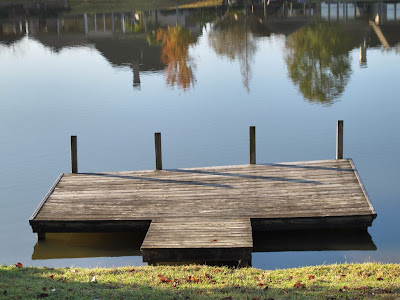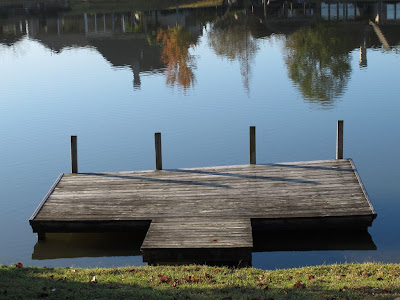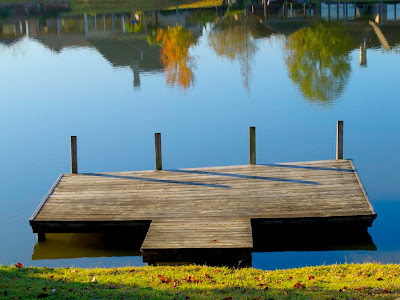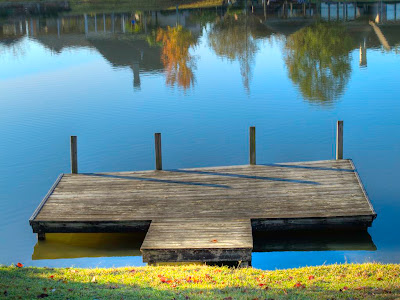.

From time to time, I like to tinker with High Dynamic Range (HDR) photos. In the past, HDR, for me, has meant taking at least three photos at varying exposures and combining those images in software such as Photomatix. The combination is then further edited in either Photomatix and/or Photoshop. The G12 has a built-in HDR mode; that is, HDR is included as one of the Scene (SCN) modes. I'd previously tried G12 HDR and didn't care too much for it but decided to give it another try.
G12 HDR is somewhat tersely described on page 71 of the G12 manual. Basically, you select HDR from one of the SCN options, choose a “Color Effect”, secure the G12 on a tripod and fire away. That's right, you do not select ISO, aperture or shutter speed. The G12 takes three shots and combines them. The three component shots are not saved; only the combination is saved.
For the above shot, I choose to turn the HDR color effect off because my goal was a more or less normal photo with, hopefully, improved dynamic range. Immediately after getting the HDR shot, I used bracketing to get three more normal shots in RAW+JPEG mode. The “correctly exposed” JPEG is shown below.

Next, I used Photomatix to generate a 32 bit HDR file and used the Photomatix Tone Compressor to make the “HDR” image below.

Finally, using the more drastic Tone Mapping produced the “HDR” image below (although not a particularly wild variation).

None of the above are particularly "right" or "wrong" -- it's all a matter of taste and being able to use technology to consistently achieve your goal. I haven't quite achieved consistency but have learned that I usually prefer the more modest "Compressor" results of HDR.
All HDR photos are not created equal and some are not even very good. Whereas my early interest in HDR tended to generate unrealistic images, my current approach is to produce more natural images with extended range. Not to say that I will never use the G12 HDR mode but my preference is still to do HDR using the more difficult, but more flexible, process.
.

From time to time, I like to tinker with High Dynamic Range (HDR) photos. In the past, HDR, for me, has meant taking at least three photos at varying exposures and combining those images in software such as Photomatix. The combination is then further edited in either Photomatix and/or Photoshop. The G12 has a built-in HDR mode; that is, HDR is included as one of the Scene (SCN) modes. I'd previously tried G12 HDR and didn't care too much for it but decided to give it another try.
G12 HDR is somewhat tersely described on page 71 of the G12 manual. Basically, you select HDR from one of the SCN options, choose a “Color Effect”, secure the G12 on a tripod and fire away. That's right, you do not select ISO, aperture or shutter speed. The G12 takes three shots and combines them. The three component shots are not saved; only the combination is saved.
For the above shot, I choose to turn the HDR color effect off because my goal was a more or less normal photo with, hopefully, improved dynamic range. Immediately after getting the HDR shot, I used bracketing to get three more normal shots in RAW+JPEG mode. The “correctly exposed” JPEG is shown below.

Next, I used Photomatix to generate a 32 bit HDR file and used the Photomatix Tone Compressor to make the “HDR” image below.

Finally, using the more drastic Tone Mapping produced the “HDR” image below (although not a particularly wild variation).

None of the above are particularly "right" or "wrong" -- it's all a matter of taste and being able to use technology to consistently achieve your goal. I haven't quite achieved consistency but have learned that I usually prefer the more modest "Compressor" results of HDR.
All HDR photos are not created equal and some are not even very good. Whereas my early interest in HDR tended to generate unrealistic images, my current approach is to produce more natural images with extended range. Not to say that I will never use the G12 HDR mode but my preference is still to do HDR using the more difficult, but more flexible, process.
.
1 comment:
nice to see the different results. thanks
Post a Comment